| About Hubei | Culture & Arts | ||
| Attractions | Routes | ||
| Dining | Shopping | ||
| Hotels | Transportation | ||
| Entertainment | Travel agencies |
Jingshan to attract Wuhan tourists
Storytelling queen
For the love of Wuhan
Dangyang to promote tourism


Enshi
(travelchinaguide.com, chinatravel.com)
Updated: 2011-11-21
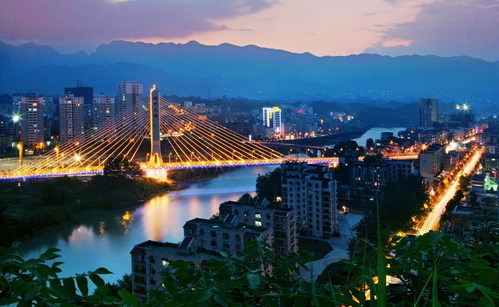 |
| Enshi in afterglow |
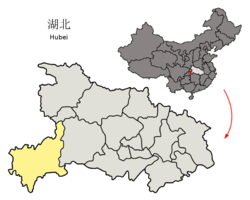
Enshi, Enshi Tujia and Miao Autonomous Prefecture as its full name, is located in the southwest end of Hubei province, bordered by Chongqing in the north and west, Xiangxi Tujia and Miao Autonomous Prefecture of Hunan province in the south and in neighborhood of Shennongjia Forest Zone in the northeast and Yichang city in the east. There are 27 nationalities living in Enshi, including Tujia, Miao, Han and Dong. Surrounded by mountains at all sides, the beautiful natural scenes and unique folkways of Enshi are well preserved.
The history of Enshi can be traced back to the Spring and Autumn Period (770 – 476 BC) as the domain of Bazi Kingdom. Through thousand years of changes, the territory of present Enshi was basically fixed up in 1925. It was called Exi (Western Hubei) Tujia and Miao Autonomous Prefecture and changed to be Enshi Tujia and Miao Autonomous Prefecture ten years later.
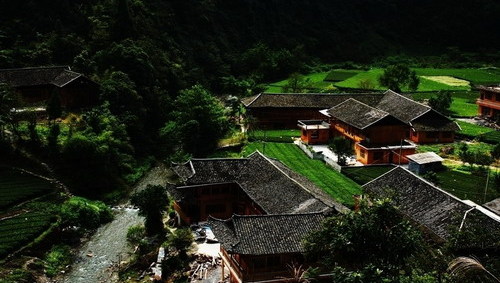 |
| Picturesque Enshi (photo from nipic.com) |
Enshi stands in the extension of the Yunnan-Guizhou Plateau. Southwest-to-northeast mountain ranges of Wushan, Qiyue, Wuling and Dalou zigzag through the prefecture. The north, southeast and northwest areas are higher in altitude and the terrain slopes downward to the south and central regions of Enshi.
The prefecture bears a subtropical mountain climate distinctly influenced by monsoon. Weather there is humid and moderate all year round. Enshi is seldom bothered by extreme heat in midsummer and chilliness in midwinter. It is usually foggy and rainy. With complex landform and an average altitude around 1,000 meters (3,281 feet), temperature varies greatly as the height and terrain change. The annual average temperature of regions between 300-1,800 meters (984 - 5,906 feet) above the sea level maintains around 17.4 - 7.8 ℃ (63.3 - 46℉).
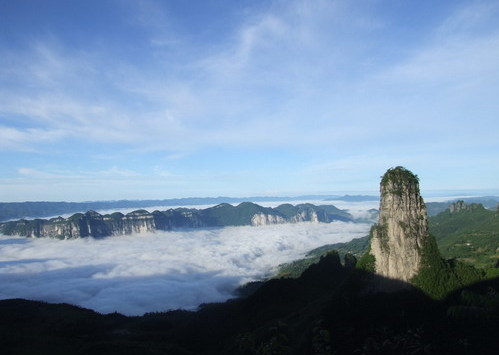 |
| Enshi Grand Crayon (photo from nipic.com) |
Enshi is mainly famous for its picturesque mountains and waters and a kaleidoscope of cafes and holes, such as the Qingjiang River, Tenglong Cave, YuMu Stockacled Village, Li's Ancestral Hall in Dashuijing village, Primitive Forest on the Xingdou Mountain, Tusi city and the Stone Forest in the Suobuya village. Besides, there a variety of folkways that worthy of seeing, like the dwelling house of Tujia and Dong nationalities, the Girl’s Festival in July, the Gongs and Drums at working time, the Sarhe at funeral, the Hand Swaying Dance at festivals and so on.
It is best to avoid traveling to Hubei province in July and August for the sultry weather, and for Enshi, April and May are the best periods to visit.
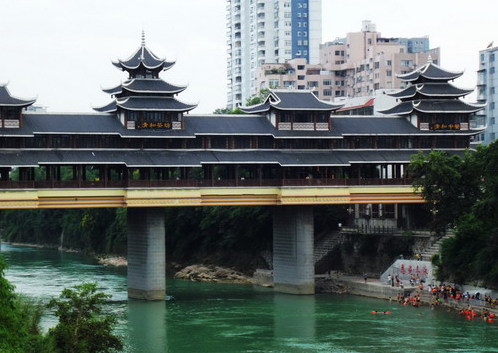 |
| Wind and Rain Bridge (photo from nipic.com) |
Travel Tips:
Enshi Xujiaping Airport is not far (4.5 kilometers/2.8 miles) from the city proper of Enshi city, mainly operating flights to Wuhan. Bus is the most important vehicle for the prefecture's transportation. There are three main bus stations operating in Enshi city: Wuyang Bus Station in Wuyangba, and the other two in Qingjiang Hotel and Foreign Trade Bureau in Dongfeng Road.
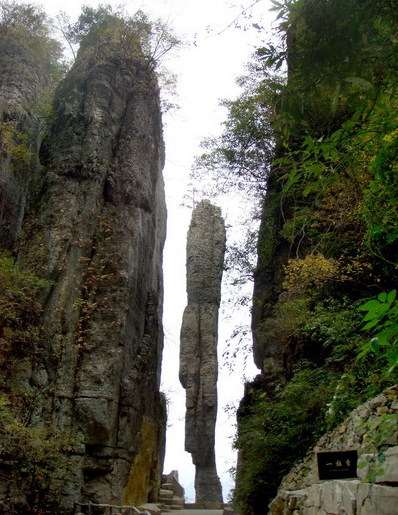 |
|
"A stick of Incense" in Enshi Grand Crayon |